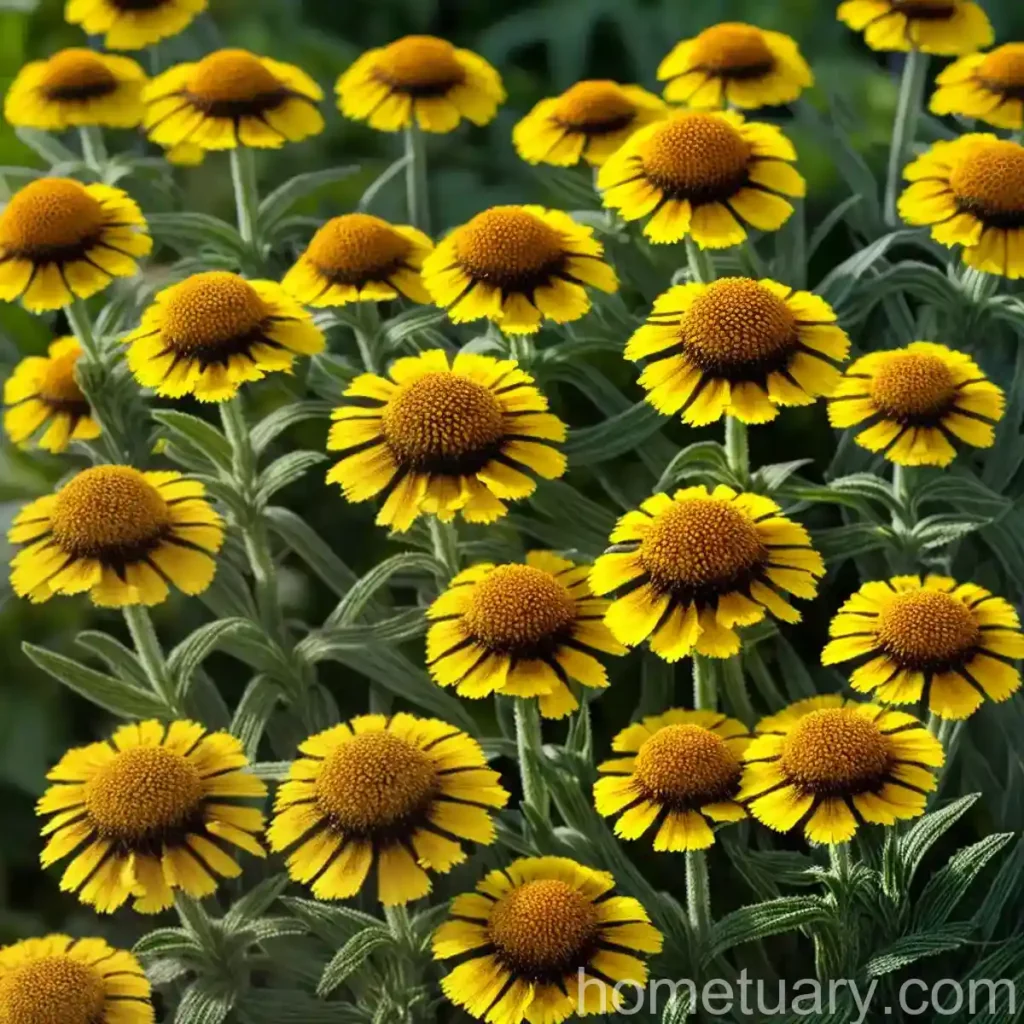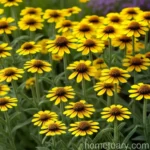Plant Profile: Sneezeweed (Helenium ‘Sombrero’)
Sneezeweed, scientifically known as Helenium ‘Sombrero,’ is a vibrant and attractive perennial plant that is beloved by many gardeners. With its stunning display of daisy-like flowers and its adaptability to various environmental conditions, sneezeweed makes an excellent addition to any garden or landscape. In this comprehensive plant profile, we will explore the key aspects of the culture, uses, maintenance, and fascinating characteristics of the sneezeweed plant.
What is Sneezeweed (Helenium ‘Sombrero’)?
Sneezeweed, or Helenium ‘Sombrero,’ is a member of the Asteraceae family, which includes a wide variety of flowering plants. This particular cultivar is celebrated for its profusion of colorful blooms and its ability to attract pollinators, making it a standout choice for gardeners looking to support local ecosystems. With a robust and low-maintenance nature, the sneezeweed plant often serves as a versatile and eye-catching addition to gardens, borders, and naturalized landscapes.
Key Takeaways – Sneezeweed (Helenium ‘Sombrero’)
Before delving into the specifics of cultivating and caring for the sneezeweed plant, let’s outline some key takeaways about this remarkable perennial:
- Sneezeweed, or Helenium ‘Sombrero,’ is a perennial plant known for its daisy-like flowers that come in a diverse range of colors.
- The plant is well-suited to a variety of landscapes, including cottage gardens, wildflower gardens, prairie gardens, and native plantings.
- Sneezeweed attracts pollinators such as butterflies, making it a valuable addition to wildlife-friendly gardens.
- It is a low-maintenance and drought-tolerant plant, offering resilience in challenging environmental conditions.
- The unique foliage colors and textures of sneezeweed contribute to its visual appeal and seasonal interest in the garden.
Now, let’s dive into the detailed aspects of sneezeweed cultivation, including its culture, uses, maintenance, and more.
Culture
Water
Sneezeweed (Helenium ‘Sombrero’) exhibits a preference for consistently moist soil, especially during its initial establishment phase. Adequate moisture supports healthy growth and prolific flowering. However, once the plant is established, it demonstrates a degree of drought tolerance and can thrive in moderately dry conditions. Proper watering practices help sustain the plant’s vigor and overall health.
Sunlight
As a sun-loving perennial, sneezeweed flourishes in full sun to partial shade. It typically thrives when provided with at least 6 hours of direct sunlight each day. Adequate sunlight promotes robust flowering and ensures that the plant maintains its vibrant and vigorous demeanor.
Fertilizer
Sneezeweed generally thrives in moderately fertile soil and may not require excessive fertilization. However, a balanced and diluted application of fertilizer in early spring can encourage healthy growth and abundant blooms. Utilizing a slow-release fertilizer or organic compost can help maintain optimal soil fertility and support the plant’s nutrient needs.
Uses
Sneezeweed’s versatility extends to various landscaping and gardening applications. Some common uses and applications of the plant include:
- Garden Borders: Sneezeweed serves as a striking addition to garden borders, providing an infusion of color and visual interest.
- Cut Flowers: The long-lasting blooms of sneezeweed make it an excellent choice for floral arrangements, adding a touch of natural beauty to indoor spaces.
- Wildlife Gardens: Due to its ability to attract pollinators, including butterflies, sneezeweed contributes to vibrant and biodiverse wildlife-friendly gardens.
Soil
Sneezeweed thrives in well-drained soil with a slightly acidic to neutral pH. It appreciates soil that retains moisture without becoming waterlogged, thereby preventing the risk of root rot. Amending heavy or compacted soil with organic matter can improve drainage and create an optimal growing environment for sneezeweed.
Pruning
Pruning sneezeweed after its flowering period can help enhance its overall appearance and encourage a more compact growth habit. Removing spent flowers and deadheading can promote the production of additional blooms and prevent the plant from expending energy on seed production. Additionally, pruning any damaged or diseased foliage can help maintain the plant’s health and aesthetics.
Propagation
Sneezeweed can be propagated through several methods, including division, stem cuttings, or seed sowing. Division, typically performed in early spring, involves separating mature clumps into smaller sections for transplanting. Stem cuttings, taken from healthy plant material, can be rooted in a suitable growing medium to produce new plants. Seed sowing provides another effective means of propagating sneezeweed, with the potential to yield a diverse array of plant variations.
Container Popularity
While sneezeweed is often planted directly in garden beds, it can also thrive in container settings. The plant’s adaptability to containers enables gardeners to incorporate it into patios, balconies, or other outdoor spaces where garden beds may be limited. Selecting a well-draining potting mix and ensuring adequate moisture and sunlight are crucial for successful container cultivation of sneezeweed.
Common Diseases
Sneezeweed is relatively resistant to many common plant diseases. However, a few factors can contribute to potential disease issues in some conditions. Some common diseases that may affect sneezeweed include:
- Powdery Mildew: This fungal disease can manifest as a powdery white coating on the plant’s foliage, potentially impacting its overall vigor and aesthetic appeal.
- Rust: Sneezeweed may be susceptible to rust, a plant disease characterized by the presence of orange or brown pustules on the leaves and stems.
- Crown Rot: Excessive moisture or poor soil drainage can increase the risk of crown rot, which may lead to the plant’s decline.
Disease Diagnosis
To accurately diagnose and address potential diseases affecting sneezeweed, it is essential to closely monitor the plant for any signs of distress. Early detection of symptoms such as unusual discoloration, spots, or wilting can aid in prompt intervention. Consulting with local horticultural experts or utilizing diagnostic resources can assist in identifying specific diseases and determining appropriate treatment strategies.
Common Pests
Sneezeweed is relatively resistant to most insect pests; however, certain pests may occasionally pose a threat to its health. Some common pests that may affect sneezeweed include:
- Aphids: These small, sap-feeding insects can cluster on the plant’s tender new growth, potentially causing distortion and damage to foliage.
- Spider Mites: These tiny arachnids can infest sneezeweed, particularly during dry and warm conditions, leading to stippled and discolored leaves.
- Whiteflies: Infestations of whiteflies can weaken sneezeweed plants by draining their sap and causing foliage yellowing.
Botanist’s Tips
For optimal success in growing and caring for sneezeweed, consider the following expert tips and recommendations:
- Provide Adequate Air Circulation: Ensuring good air circulation around sneezeweed plants can help prevent common fungal diseases by reducing excess humidity and promoting leaf dryness.
- Monitor Soil Moisture Closely: While sneezeweed appreciates consistent moisture, it is crucial to avoid waterlogging the soil, as excessive moisture can lead to root rot and other issues.
- Support Pollinators: Encourage and support pollinators by cultivating sneezeweed alongside other pollinator-friendly plants to contribute to a thriving ecosystem within the garden.
Fun Facts
- Sneezeweed, despite its common name, does not cause allergic reactions that induce sneezing. The name “sneezeweed” is derived from historic folk uses of its dried leaves and flowers in making snuff.
- Sneezeweed is well-regarded for its attractive and long-lasting blooms, making it a popular choice for adding vibrant colors to garden landscapes and floral arrangements.
Links to External Resources
To further explore the cultivation, care, and uses of sneezeweed (Helenium ‘Sombrero’), consider the following external resources:
- Helenium ‘Sombrero’ – Plant Profile and Care Guide
- Sneezeweed Planting and Maintenance Tips
- Attracting Pollinators with Sneezeweed in the Garden
In conclusion, sneezeweed (Helenium ‘Sombrero’) stands out as a stunning and versatile perennial plant that offers an array of visual and ecological benefits. With its adaptable nature, vibrant blooms, and minimal maintenance requirements, sneezeweed holds remarkable appeal for both novice and experienced gardeners. Whether incorporated into garden borders, wildlife-friendly landscapes, or container settings, sneezeweed makes a valuable and captivating addition to any outdoor space.
For those seeking an effortlessly charming and pollinator-friendly plant, Helenium ‘Sombrero’ exemplifies the enchanting allure and practical benefits of cultivating sneezeweed in diverse gardening and landscaping contexts.















